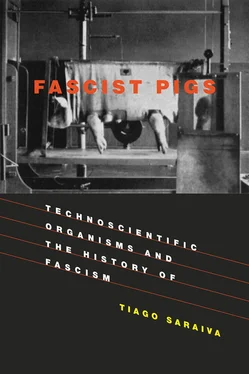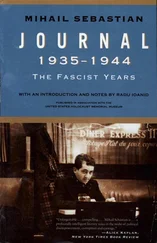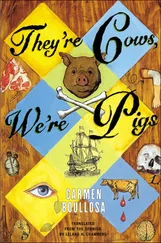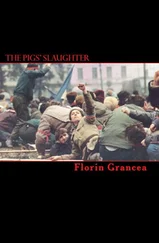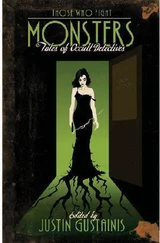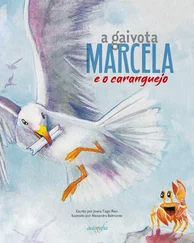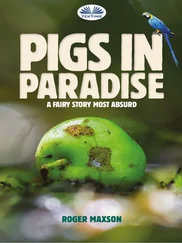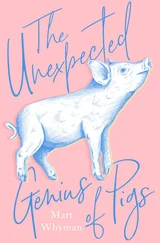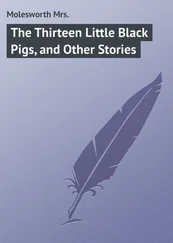Tiago Saraiva
FASCIST PIGS
TECHNOSCIENTIFIC ORGANISMS AND THE HISTORY OF FASCISM
for Vanessa, Francisco, and António
Figure 1.1 Armando Bruni, “Mussolini threshing wheat at the Agro Pontino” (1935). (Fondo Armando Bruni / Rcs Archive)
Figure 1.2 The Permanent Committee of the Wheat Campaign, 1925. Nazareno Strampelli is seated immediately to the right of Mussolini. (Il Giornale di Risicoltura 15, no. 8 (1925): 116)
Figure 1.3 Nazareno Strampelli (1866–1942). (Fondo Nazareno Strampelli, Rieti State Archives)
Figure 1.4 The Royal Experiment Station of Wheat Cultivation in Rieti, 1932. (Nazareno Strampelli, “I Miei Lavori: origine e svilluppi—I grani della vittoria,” in Origini, Svillupi, Lavori e Risultati , Istituto Nazionale di Genetica per la Cerealicoltura, 1932)
Figure 1.5 Strampelli’s hybridization greenhouse, 1932. (Strampelli, “I Miei Lavori,” p. 55)
Figure 1.6 Strampelli’s Ardito wheat, 1932. (Strampelli, “I Miei Lavori”)
Figure 1.7 The building of the Association of Rieti Reproducers of Seed, 1932. (Strampelli, “I Miei Lavori, p. 156)
Figure 1.8 The exhibit presented by Strampelli’s National Institute of Genetics at the National Grain Exhibition, 1932. (Fondo Nazareno Strampelli, Rieti State Archives)
Figure 2.1 The cover of José Pequito Rebelo’s book O Método Integral, 1923–1942 (Gama, 1942).
Figure 2.2 Artur Pastor, “Threshing Wheat in Alentejo, 1940.” (Fundo Artur Pastor, Arquivo Municipal de Lisboa)
Figure 2.3 António Sousa da Câmara, 1901–1971. (Arquivo Histórico Parlamentar)
Figure 2.4 Artur Pastor, “Mechanic Sower, Alentejo, 1940s. (Fundo Artur Pastor, Arquivo Municipal de Lisboa)
Figure 2.5 Artur Pastor, “Grain Silos, Alentejo, 1940s.” (Fundo Artur Pastor, Arquivo Municipal de Lisboa)
Figure 2.6 A bas-relief by Henri Bettencourt of the Portuguese Corporatist New State, carved for Portugal’s pavilion at the Paris World Exhibition, 1937. (Fundo Mário Novais, Art Library of the Calouste Gulbenkian Foundation)
Figure 2.7 Artur Pastor, “Measuring Rice at the National Agricultural Experiment Station,” ca. 1950. (Fundo Artur Pastor, Arquivo Municipal de Lisboa)
Figure 2.8 The National Agricultural Experiment Station, ca. 1940. (Fundo Mário Novais, Art Library of the Calouste Gulbenkian Foundation)
Figure 2.9 A photograph (ca. 1947) of the office of António Ferro, the New State’s head of propaganda, combining streamlined Portuguese pre-modern traditions with modernist furniture and carpet. Note the portrait of Salazar on the cabinet. (Fundo Mário Novais, Art Library of the Calouste Gulbenkian Foundation)
Figure 3.1 Peasant leaders (Bauernführer) from all regions of Germany parading through the streets of Berlin. (Achim Thiele and Kurt Goeltzer, Deutsche Arbeit im Vierjahresplan , Gerhard Stalling, 1933)
Figure 3.2 A bread line during World War I. (Bundesarchiv, Bild 183-R00012 / CC-BY-SA 3.0)
Figure 3.3 The main Building of the Biologische Reichsanstalt für Land- und Forstwirtschaft in Berlin-Dahlem, 1936. ( Die Biologische Reichsanstalt für Land und Forstwirtschaft in Berlin-Dahlem , Paul Parey, 1936)
Figure 3.4 Greenhouses of the Biologische Reichsanstalt für Land- und Forstwirtschaft in Berlin-Dahlem, 1936. ( Die Biologische Reichsanstalt für Land und Forstwirtschaft in Berlin-Dahlem , Paul Parey, 1936)
Figure 3.5 Performing the sprout test at the Biologische Reichsanstalt für Land- und Forstwirtschaft, 1936. ( Die Biologische Reichsanstalt für Land und Forstwirtschaft in Berlin-Dahlem , Paul Parey, 1936)
Figure 3.6 Sprouts from various potato varieties, 1931. (K. Snell, “Sorteneigenschaft und Sortenmerkmal,” Der Züchter 3, no. 4, 1931: 125–127)
Figure 3.7 A Reichsnährstand beetle wagon in the Saarland, July 1936. ( Nachricthenblatt für den Deutschen Pflanzenschutzdienst 16, no. 7, 1936: 53)
Figure 3.8 A 1937 elementary school chart with illustrations showing the differences between the harmful (schädlich) Colorado potato beetle from the useful (nützlich) ladybug. ( Nachricthenblatt für den Deutschen Pflanzenschutzdienst 17, no. 7, 1937: 53)
Figure 3.9 A 1936 organizational chart of the Biologische Reichsanstalt für Land- und Forstwirtschaft. ( Die Biologische Reichsanstalt für Land und Forstwirtschaft in Berlin-Dahlem , Paul Parey, 1936)
Figure 3.10 The title page of the proceedings of a1943 conference held by the Biologische Reichsanstalt für Land- und Forstwirtschaft. Note deletion of the swastika under the imperial eagle in this copy. ( Virustagung der Biologischen Reichsanstalt für Land- und Forstwirtschaft am 23 januar 1943 , Paul Parey, 1943)
Figure 4.1 Richard Darré speaking at a 1937 Reichsnährstand meeting in Goslar under the slogan “Blut und Boden.” (Bundesarchiv, Bild 183-H1215–503–009 / CC-BY-SA 3.0)
Figure 4.2 Gustav Frölich (1879–1940). ( Zeitschrift für Schweinezucht , 47.35, 1940)
Figure 4.3 The zoo for domesticated animals of the Agricultural Institute of the University of Halle, 1888 (source unknown).
Figure 4.4 A record of fattening performance. (Jonas Schmidt, Joachim Kliesch, and Viktor Goerttler, Lehrbuch der Schweinezucht. Züchtung, Ernährung, Haltung, und Krankheiten des Schweines , Paul Parey, 1941)
Figure 4.5 The animal bureaucracy of the Reichsnährstand. (Albert Brummenbaum, “Die Organisation der deutschen Tierzucht,” Kühn-Archiv 49, 1938: 3–7)
Figure 4.6 The German pig performance register, 1940. (“Deutsches Schweineleistungsbuch,” Zeitschrift für Schweinezucht 47, no. 15, 1940: 117)
Figure 4.7 Swine fat content experiments with x-rays. (Friedrich Hogreve, “Ausbau eines neuen Forschungsweges zur Bestimmung der Fettwüchigkeit und Fettleistung in vercshiedenen Mastabschnitten beim lebenden Schwein verschiedener Rassenzugehörigkeit,” Zeitschrift für Züchtung 40, no. 3, 193): 377–395)
Figure 4.8 Herbert Backe and Nazi agricultural leaders contemplating pigs in Wartheland, 1943. ( Zeitschrift für Schweinezucht 50, no. 1, 1943)
Figure 4.9 Encouraging housewives to mobilize for pig feeding. ( Zeitschrift für Schweinezucht 44, no. 25, 1937)
Figure 4.10 Buildings and laboratories of the Kaiser Wilhelm Institute for Animal Breeding. (Jahrbuch der Kaiser Wilhelm Gesellschaft, 1941.)
Figure 4A.1 Portugal’s pavilion at the 1937 Paris World Exhibition, featuring a map overlapping Portuguese colonial possessions (including Angola and Mozambique) with a map of Europe and asserting that “Portugal is not a small country.” The installation suggests the pertinence of perceiving a continuum between European expansionism in Africa and the Nazis’ quest for Lebensraum in eastern Europe. (Fundo Mário Novais, Art Library of the Calouste Gulbenkian Foundation)
Figure 5.1 A 1942 photo of the main building of the Agricultural Institute for Italian Africa in Florence. (Archivo Istituto Agricola Oltremare, Florence)
Figure 5.2 Coffee cultivation in Galla Sidama, Italian Oriental Africa, 1939. ( Annali Africa Italiana 2, no. 3, 1939: 304–305)
Figure 5.3 A map of areas in Nazi eastern Europe cultivated with kok-sagyz. Dotted half-circles denote areas of cultivation abandoned after to the Soviet counter-attack; black half-circles indicate new areas under cultivation in 1944. (Jahresbericht der Gruppe Anbau und Versuchswesen für die Zeit vom 1. Januar 1943 bis 31. Dezember 1943, Bundesarchiv, NS19/3919)
Figure 5.4 Physiological analysis of rubber rich kok-sagyz root. (Jahresbericht 1942/43 der Gruppe Züchtung, Bundesarchiv, NS 19/3919)
Читать дальше
